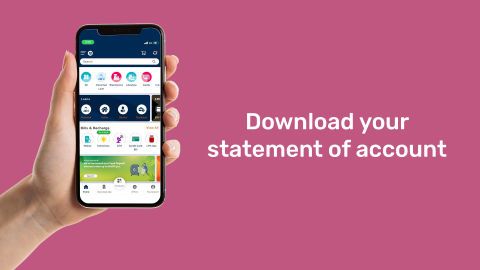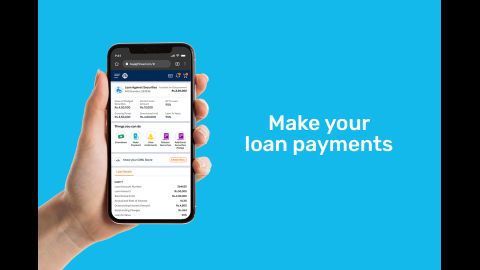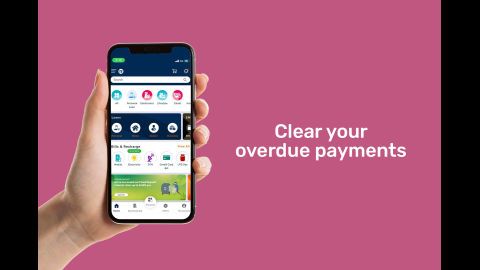Fixed Deposit interest certificate
Fixed deposit is a popular investment option that enables individuals to earn notable returns on their deposits over a pre-set tenure. However, the amount one earns from this investment comes under taxation if it exceeds the minimum income threshold.
In this case, financiers charge a TDS according to the norms of the Income Tax Act of 1961. You can get a Bajaj Finserv TDS certificate on fixed deposit that will include the required information regarding this deduction.
Additional Read: FD Status
How to download fixed deposit interest certificate
Following is a brief guide on downloading the TDS certificate on a fixed deposit from Bajaj Finserv.
1. Using the Bajaj Finserv Service portal
You can quickly download your TDS certificate on fixed deposit via Bajaj Finserv’s service portal. Here's a step-by-step guide:
Step 1: Log in to Bajaj Finance service portal using the required credentials.
Step 2: Go to the main menu and select ‘Mandates and documents’.
Step 3: Click on ‘Document Centre’ and select your FD.
Step 4: Find all the documents and download the TDS certificate.
Besides logging in to the service portal, you can also use its mobile application to obtain this certificate.
2. Using the Bajaj Finserv customer care
You can also get the TDS certificate through customer care by contacting the helpline number and asking for assistance. The representative will inform you and send the document via email.
How to calculate TDS on fixed deposit?
Before moving on to the TDS calculation on FD interest, you should know the TDS rates applicable on this investment instrument. Here are the details:
- For resident Indians
This rate is 10% for a total interest income of up to Rs. 40,000. However, for senior citizens, the upper limit of annual interest income is Rs. 50,000. Please note that the individuals who do not have a PAN card, this rate increases to 20%.
- For non-resident Indians (NRIs)
The TDS rate for NRIs stands at 30%, including additional surcharges and cess.
Moving ahead, here are two examples to demonstrate the TDS calculation of fixed deposits.
You have two fixed deposits of Rs. 1 lakh at 7% each. In that case, after a year, your total interest income will be Rs. 14,000, which is below the total interest income mark. Hence, financial institutions will not deduct TDS against it.[6]
On the other hand, you have an FD of Rs. 10 lakh at an interest rate of 8%. Therefore, your total interest income for that year will be Rs. 80,000, which is over the upper limit of Rs. 40,000. Thus, a financial institution will deduct TDS against it.
However, if you want to avoid an upfront TDS deduction on your interest income, you can submit the 15G form and 15H form for senior citizens.
A Bajaj Finserv TDS certificate is a vital document. It reflects that you have paid income tax on your total interest income, and tax on this will not be applicable during ITR filing.
Features of Fixed Deposit Certificate
A Fixed Deposit Certificate (FDC) is a financial instrument issued by banks or financial institutions, offering a secure way to grow savings over a specified period. One of its key features is a fixed interest rate, which remains unaffected by market fluctuations, ensuring predictable returns. The investment tenure can range from a few months to several years, with interest typically payable at maturity or at regular intervals, depending on the scheme chosen. FDCs are considered low-risk, making them ideal for conservative investors. Additionally, they are often eligible for tax exemptions under certain conditions. Premature withdrawal is usually possible but may attract a penalty, reducing the interest earned. Some FDCs also offer the option of automatic renewal, continuing the investment for another term at the prevailing rate. Overall, FDCs provide a reliable and stable investment option for individuals seeking capital preservation with assured returns.
Frequently asked questions
Exemption on the interest income of a fixed deposit is only available if your total interest income for a financial year is less than Rs. 40,000 and Rs. 50,000 for senior citizens. Otherwise, you’re liable to pay TDS on FD interest at 10%.
To check the status of TDS on your Fixed Deposit with Bajaj Finserv, log in to the Bajaj Finserv customer portal, navigate to the 'Fixed Deposit' section, and view the TDS details. Alternatively, you can refer to the Form 26AS available on the Income Tax Department's website.
To claim a TDS refund on your Fixed Deposit, file your income tax return, declaring the income earned from the FD. If your total tax liability is less than the TDS deducted, the excess amount will be refunded by the Income Tax Department.








